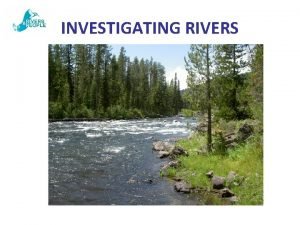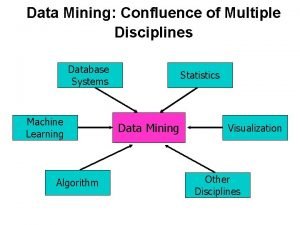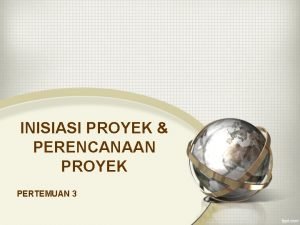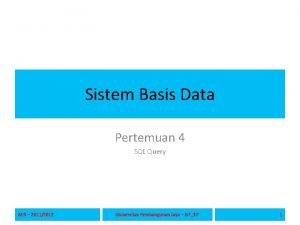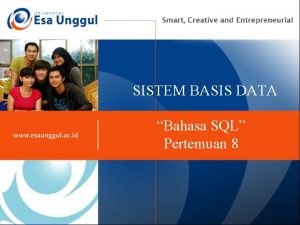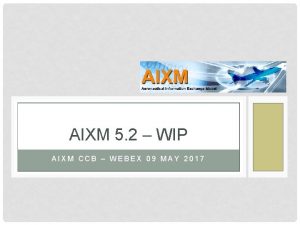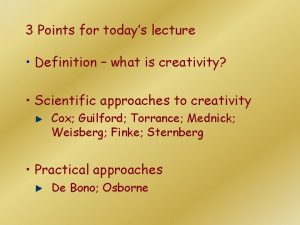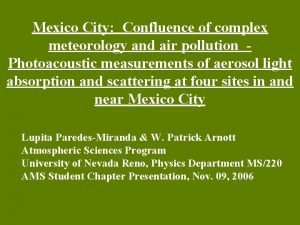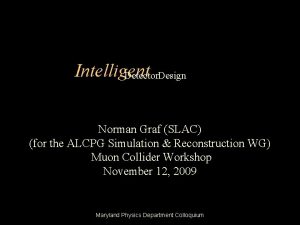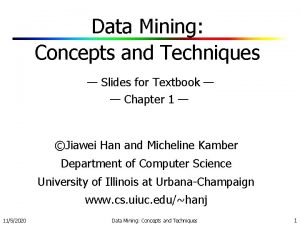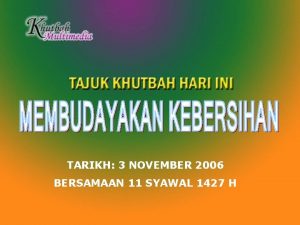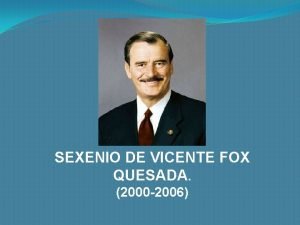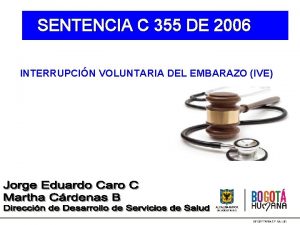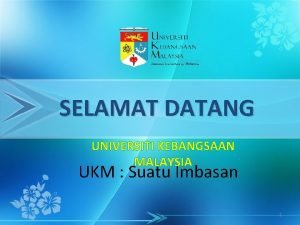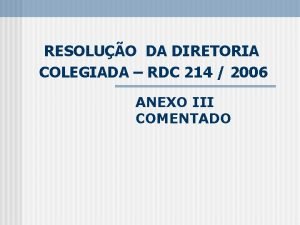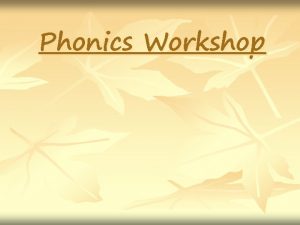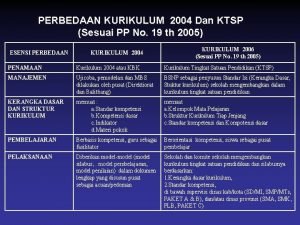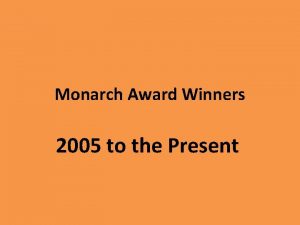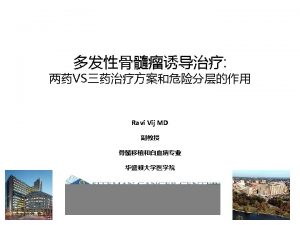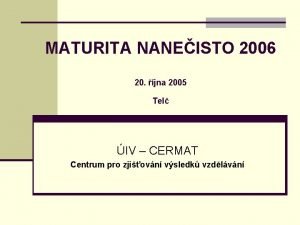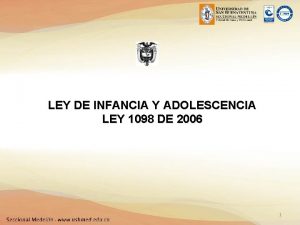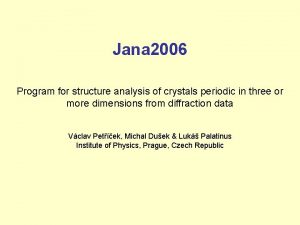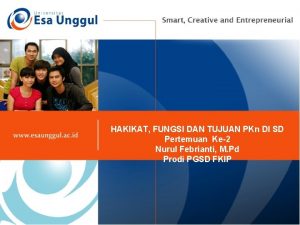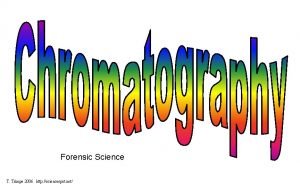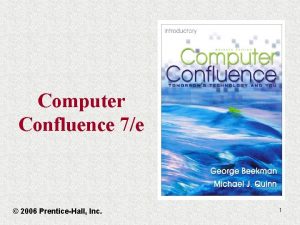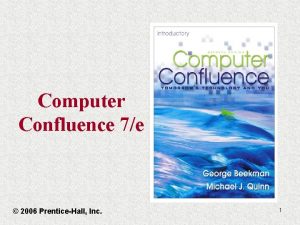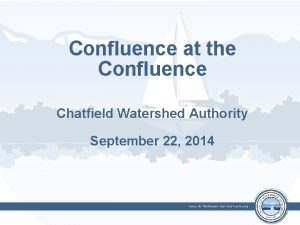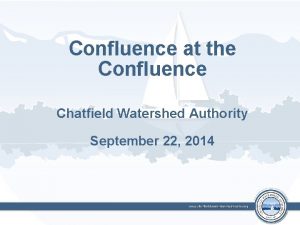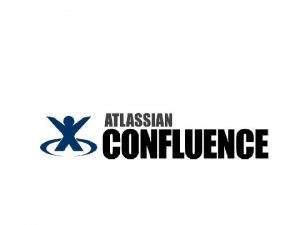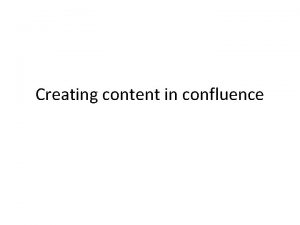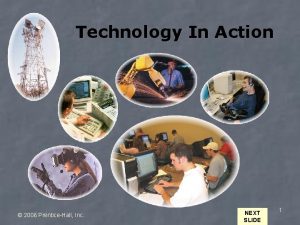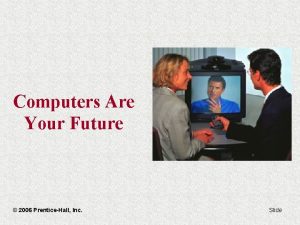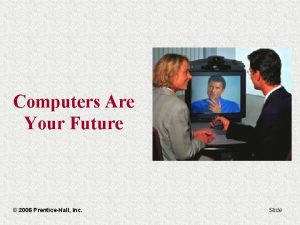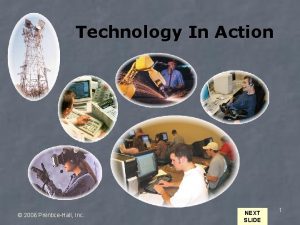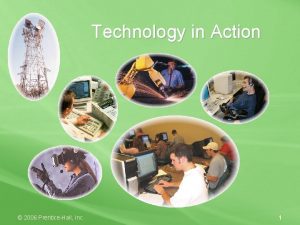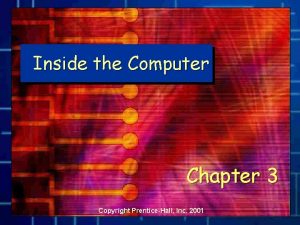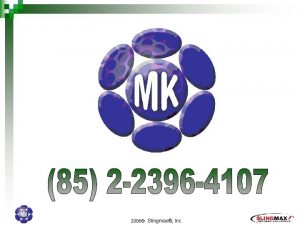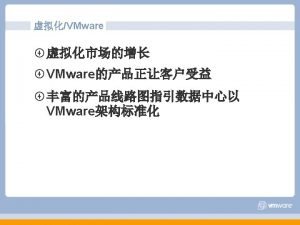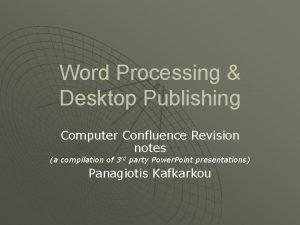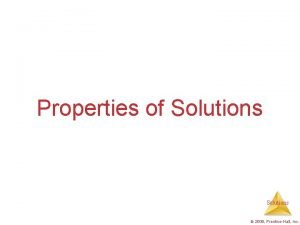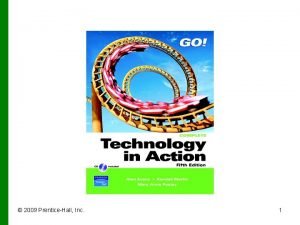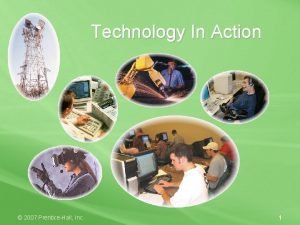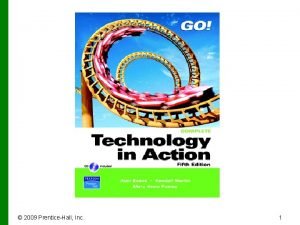Computer Confluence 7e 2006 PrenticeHall Inc 1 Computer




































- Slides: 36

Computer Confluence 7/e © 2006 Prentice-Hall, Inc. 1

Computer Confluence 7/e Chapter 1 Computer Currents and Internet Waves © 2006 Prentice-Hall, Inc. 2

Computer Confluence 7/e Chapter 1 Objectives ü What a computer is and what it does ü Ways computers play a critical role in modern life ü The history of the development of the modern computer ü Trends in the evolution of modern computers ü Fundamental differences between computers and other machines ü The relationship between hardware and software © 2006 Prentice-Hall, Inc. 3

Computer Confluence 7/e Chapter 1 Objectives (continued) üThe four major types of computers in use today and their principal uses üHow the Internet is changing the way people use computers and information technology üToday’s Information Age üThe social and ethical impact of information technology on our society © 2006 Prentice-Hall, Inc. 4

Computer Confluence 7/e Chapter 1 The Google Guys: Search for Success ü Google is one of the most successful companies on WWW Ø search for Web pages, facts, quotes, etc. Ø 200 million queries a day ü Launched by a Sergey Brin and Larry Page (Stanford Ph. D. students) ü New approach in webpage design: ü Marks a page’s relevance by the number of times other related web pages link to it, not how often a word or phrase appeared on a page © 2006 Prentice-Hall, Inc. 5

Computer Confluence 7/e Chapter 1 Computing Before Computers ü Charles Babbage (1791 -1871) Ø 19 th-century mathematics professor at Cambridge ü The Analytical Engine, Lady Lovelace (1823) Ø Mother of all computers, conceived by Charles Babbage Ø Could be programmed with punched cards Ø Could carry out any calculation to 20 digits of accuracy © 2006 Prentice-Hall, Inc. 6

Computer Confluence 7/e Chapter 1 Computing Before Computers ü Augusta Ada King, Countess of Lovelace Ø Ø Ø Interpreter and promoter of Babbage’s visionary work Wrote a plan for using the Analytical Engine to calculate sequences of Bernoulli numbers Often called the first computer programmer © 2006 Prentice-Hall, Inc. 7

Computer Confluence 7/e Chapter 1 Living without Computers ü ü Computers are no longer a luxury but rather a commodity Computers and their applications are involved in all aspects of our daily life © 2006 Prentice-Hall, Inc. 8

Computer Confluence 7/e Chapter 1 Computers in Perspective: An Evolving Idea üEvery computer in use today follows the basic plan laid out by Babbage and Lady Lovelace üThe computer is an incredibly versatile tool ØCan compute your taxes or deploy a missile © 2006 Prentice-Hall, Inc. 9

Computer Confluence 7/e Chapter 1 Computers in Perspective: An Evolving Idea ü All computers take in information called input and give out information called output © 2006 Prentice-Hall, Inc. 10

Computer Confluence 7/e Chapter 1 Computers in Perspective: An Evolving Idea (continued) ü The computer's versatility is built upon its: ØHardware: The physical part ØSoftware: The instructions that tells hardware how to transform the input data (information in a form it can read) into the necessary output © 2006 Prentice-Hall, Inc. 11

Computer Confluence 7/e Chapter 1 Computers in Perspective: An Evolving Idea (continued) üThe First Real Computers: Ø 1939: Konrad Zuse completed the first programmable, general-purpose digital computer © 2006 Prentice-Hall, Inc. 12

Computer Confluence 7/e Chapter 1 Computers in Perspective: An Evolving Idea (continued) ØAt about the same time, the British government was assembling a top-secret team of mathematicians and engineers to crack Nazi military codes q 1943: The team, led by mathematician Alan Turing and others, completed Colossus, considered by many to be the first electronic digital computer © 2006 Prentice-Hall, Inc. 13

Computer Confluence 7/e Chapter 1 Computers in Perspective: An Evolving Idea (continued) Ø 1939: Iowa State University professor John Atanasoff developed what could have been the first electronic digital computer, the Atanasoff-Berry Computer (ABC) © 2006 Prentice-Hall, Inc. 14

Computer Confluence 7/e Chapter 1 Computers in Perspective: An Evolving Idea (continued) Ø 1944: Thanks to a one million dollar grant from IBM, Harvard professor Howard Aiken developed the Mark I © 2006 Prentice-Hall, Inc. 15

Computer Confluence 7/e Chapter 1 Computers in Perspective: An Evolving Idea (continued) Ø John Mauchly and J. Presper Eckert helped the U. S. effort in World War II by constructing a machine to calculate trajectory tables for new guns Øcalled ENIAC (Electronic Numerical Integrator and Computer) Ø After the war, Mauchly and Eckert started a private company called Sperry and created UNIVAC I, the first general-purpose commercial computer © 2006 Prentice-Hall, Inc. 16

Computer Confluence 7/e Chapter 1 Computers in Perspective: An Evolving Idea (continued) üEvolution and Acceleration ØVacuum tubes were used in early computers ØTransistors replaced vacuum tubes starting in 1956 ØBy the mid-1960 s transistors were replaced by integrated circuits © 2006 Prentice-Hall, Inc. 17

Computer Confluence 7/e Chapter 1 Computers in Perspective: An Evolving Idea (continued) ØIntegrated circuits brought: q Increased reliability q Smaller size q Higher speed q Higher efficiency q Lower cost © 2006 Prentice-Hall, Inc. 18

Computer Confluence 7/e Chapter 1 Computers in Perspective: An Evolving Idea (continued) üThe Microcomputer Revolution Ø 1971: The first microprocessor was invented by Intel engineers Ø The microcomputer revolution began in 1970: q. Apple q. Commodore q. Tandy Ø Desktop computers haven’t completely replaced big computers, which have also evolved © 2006 Prentice-Hall, Inc. 19

Computer Confluence 7/e Chapter 1 Computers Today: A Brief Taxonomy üMainframes and Supercomputers ØMainframes q. Used by large organizations, such as banks and airlines, for big computing jobs © 2006 Prentice-Hall, Inc. 20

Computer Confluence 7/e Chapter 1 Computers Today: A Brief Taxonomy ØSupercomputers q. For power users who need access to the fastest, most powerful computers made © 2006 Prentice-Hall, Inc. 21

Computer Confluence 7/e Chapter 1 Computers Today: A Brief Taxonomy üServers, Workstations, and PCs ØServers q Computers designed to provide software and other resources to other computers over a network © 2006 Prentice-Hall, Inc. 22

Computer Confluence 7/e Chapter 1 Computers Today: A Brief Taxonomy ØWorkstations q High-end desktop computers with massive computing power used for high-end interactive applications © 2006 Prentice-Hall, Inc. 23

Computer Confluence 7/e Chapter 1 Computers Today: A Brief Taxonomy ØPCs: Serve a single user at a time ØCommon applications include: Ø word processing, accounting, gaming, and enjoying digital music and video © 2006 Prentice-Hall, Inc. 24

Computer Confluence 7/e Chapter 1 Computers Today: A Brief Taxonomy (continued) ØPortable Computers: Machines that are not tied to the desktop q. Notebooks (laptops) q. Handheld computers (PDAs) © 2006 Prentice-Hall, Inc. 25

Computer Confluence 7/e Chapter 1 Computers Today: A Brief Taxonomy üEmbedded Computers Ø Special-purpose computer: Dedicated computers that perform specific tasks q. Controlling the temperature and humidity q. Monitoring your heart rate q. Monitoring your house security system © 2006 Prentice-Hall, Inc. 26

Computer Confluence 7/e Chapter 1 Computer Connections: The Internet Revolution üThe Emergence of Networks ØLocal-Area Networks (LANs) ØWide-Area Networks (WANs) ØThe experimental network built in 1969, called ARPANET, would become the Internet © 2006 Prentice-Hall, Inc. 27

Computer Confluence 7/e Chapter 1 Computer Connections: The Internet Revolution (continued) üThe Internet Explosion ØElectronic mail q E-mail software ØWorld Wide Web q Led the Internet’s transformation from a text-only environment into a multimedia landscape incorporating pictures, animation, sounds, and video ØWeb browsers q Programs that, in effect, serve as navigable windows into the Web © 2006 Prentice-Hall, Inc. 28

Computer Confluence 7/e Chapter 1 Computer Connections: The Internet Revolution (continued) ØHypertext links q Tie together millions of Web pages created by diverse authors ØIntranets q Private intra-organizational networks based on Internet technology ØNetwork computers q Stripped-down computers designed to function mainly as network terminals “All persons are caught in an inescapable network of mutuality, tied in a single garment of destiny. Whatever affects one directly, affects all indirectly”. . —Martin Luther King Jr. . ØSet-top boxes q Provide Internet access through television sets © 2006 Prentice-Hall, Inc. 29

Computer Confluence 7/e Chapter 1 Into the Information Age ü In the history of our society we have had: q q An agricultural age An industrial age ü Now we are in a new age, the information age: Ø More and more people earn their livings working with words, numbers, and ideas © 2006 Prentice-Hall, Inc. 30

Computer Confluence 7/e Chapter 1 Living with Computers (continued) üExplanations: Clarifying Technology Ø Computer literacy is already improving our day-to-day life and careers üApplications: Computers in Action Ø Applications: enable you to use a computer for specific purposes © 2006 Prentice-Hall, Inc. 31

Computer Confluence 7/e Chapter 1 Living with Computers (continued) üImplications: Social and Ethical Issues Ø The threat to personal privacy posed by large databases and computer networks Ø The hazards of high-tech crime and the difficulty of keeping data secure Ø The difficulty of defining and protecting intellectual property in an all-digital age Ø The risks of computer system failure © 2006 Prentice-Hall, Inc. 33

Computer Confluence 7/e Chapter 1 Living with Computers (continued) ØThe threat of automation and the dehumanization of work ØThe abuse of information as a tool of political and economic power ØThe dangers of dependence on complex technology ØThe death of privacy ØThe blurring of reality ØThe evolution of intelligence ØThe emergence of bio-digital technology © 2006 Prentice-Hall, Inc. 34

Computer Confluence 7/e Chapter 1 Inventing the Future Ø Hardware: the base of any new project Ø Software: the next step, which gives value to the hardware Ø Service: the most successful current business approach Ø Way of life: computers tend to become part of our way of life © 2006 Prentice-Hall, Inc. 35

Computer Confluence 7/e Chapter 1 Lesson Summary Ø Computers have evolved at an incredible pace since Charles Babbage’s plan for an Analytical Engine Ø Computers today come in all shapes and sizes, with specific types being well suited for particular jobs Ø Connecting to a network enhances the value and power of a computer: q Internet q WWW q E-mail © 2006 Prentice-Hall, Inc. 36

Computer Confluence 7/e Chapter 1 Lesson Summary (continued) Ø Computers and information technology have changed the world rapidly and irreversibly Ø Emerging technologies, such as artificial intelligence, offer promise for future applications Ø Computers also threaten our privacy, our security, and perhaps our way of life © 2006 Prentice-Hall, Inc. 37
 How is a delta formed
How is a delta formed Datamining
Datamining Confluence health occupational medicine
Confluence health occupational medicine Confluence hro
Confluence hro Dynamics 365 jira
Dynamics 365 jira Contoh project initiation
Contoh project initiation Bariatric dental chair
Bariatric dental chair Confluence sql
Confluence sql Confluence sql
Confluence sql Aixm confluence
Aixm confluence Confluence organigramm
Confluence organigramm Data mining confluence of multiple disciplines
Data mining confluence of multiple disciplines Confluence approach to creativity
Confluence approach to creativity Confluence meteorology
Confluence meteorology Confluence slac
Confluence slac Data mining concepts and techniques
Data mining concepts and techniques A real friend 2006
A real friend 2006 Sentencia c-355 de 2006
Sentencia c-355 de 2006 Pengiktirafan ukm 2006
Pengiktirafan ukm 2006 Monarch awards 2006
Monarch awards 2006 Syawal 2006
Syawal 2006 Fingerprint factoid
Fingerprint factoid Mercedes quesada etxaide
Mercedes quesada etxaide Que es la sentencia c 355 de 2006
Que es la sentencia c 355 de 2006 Pengiktirafan ukm 2006
Pengiktirafan ukm 2006 Rdc 214 de 2006
Rdc 214 de 2006 Jim rose review
Jim rose review Perbedaan kurikulum 2004 dan 2013
Perbedaan kurikulum 2004 dan 2013 Monarch awards 2006
Monarch awards 2006 2006 - 1971
2006 - 1971 Maturita 2006
Maturita 2006 Ley 1098
Ley 1098 Jana crystallography
Jana crystallography Friday prayer chant
Friday prayer chant Giec 2006
Giec 2006 Apa hakikat fungsi dan tujuan pkn di sd
Apa hakikat fungsi dan tujuan pkn di sd T.trimpe 2006 http sciencespot.net
T.trimpe 2006 http sciencespot.net
